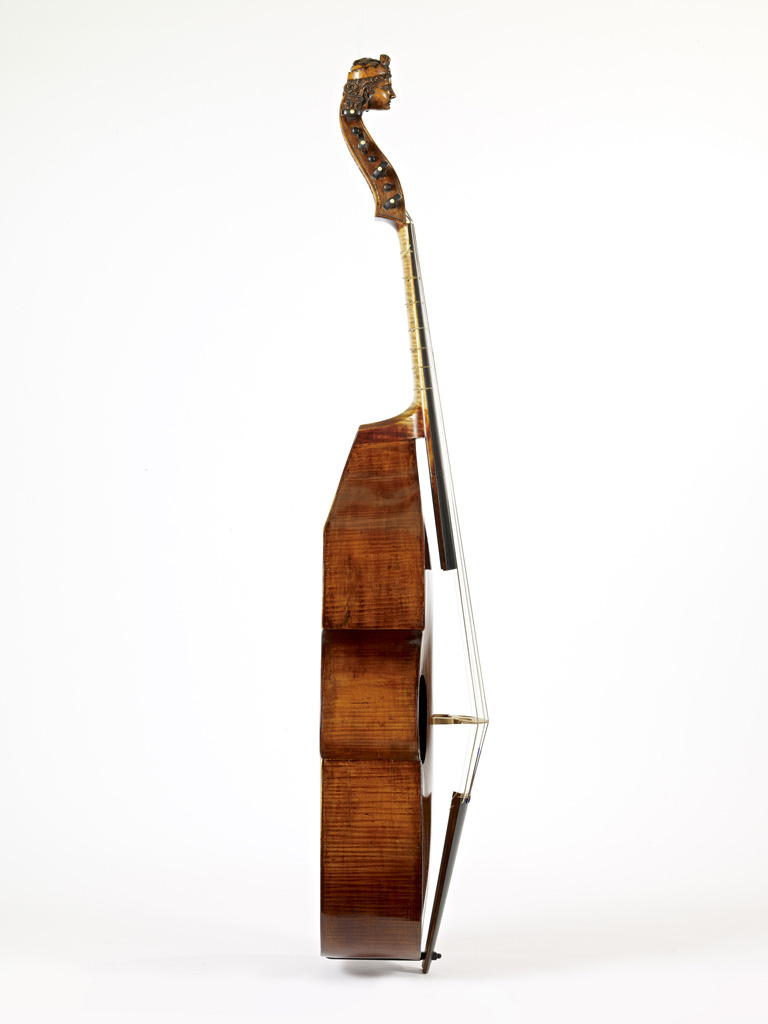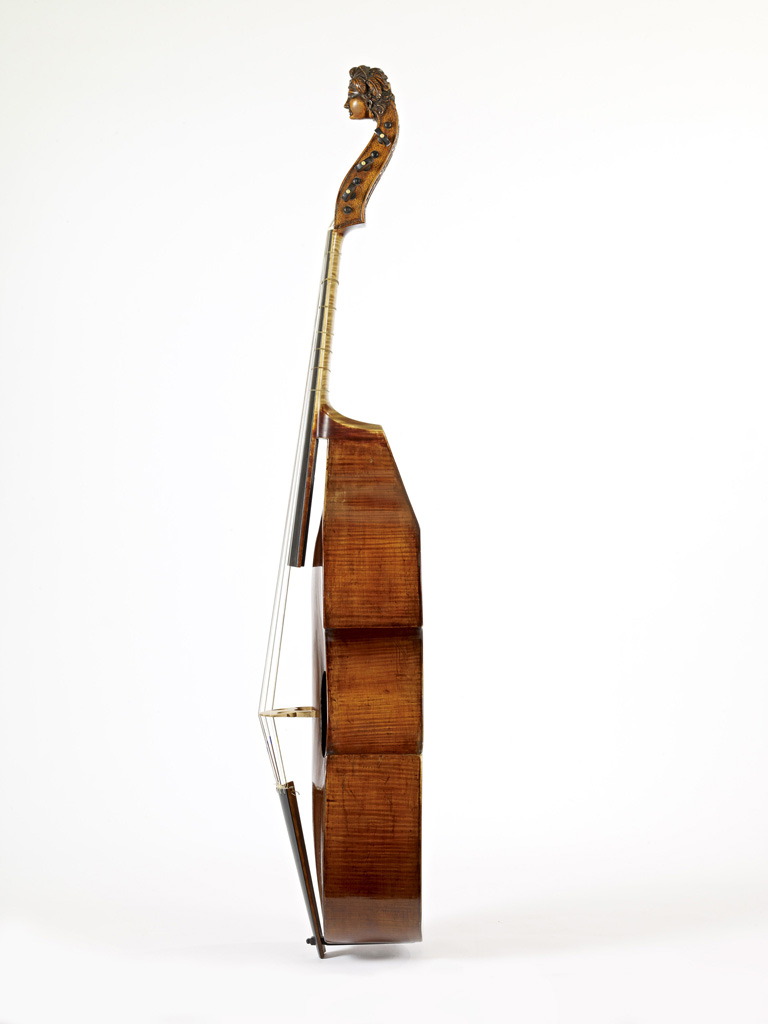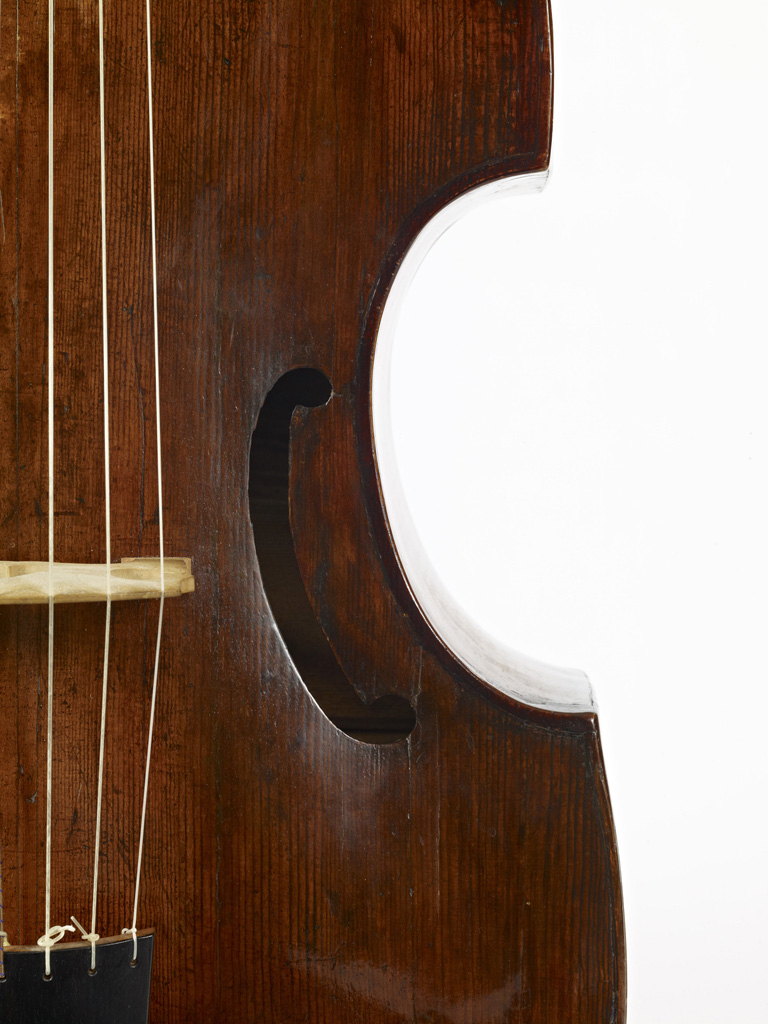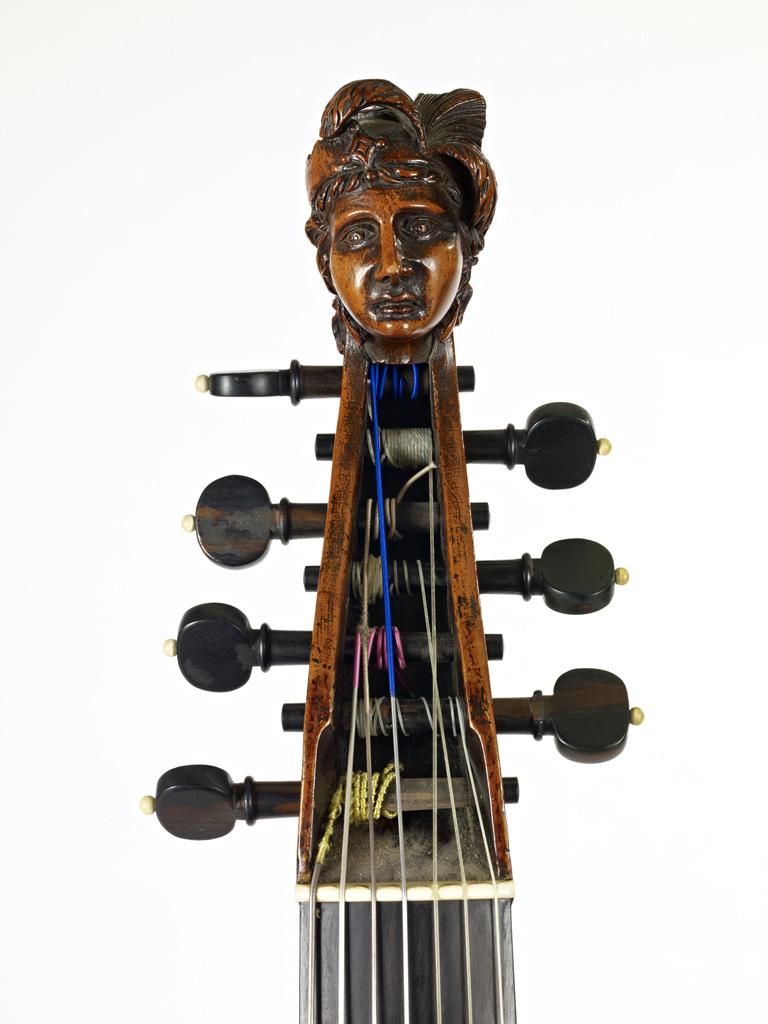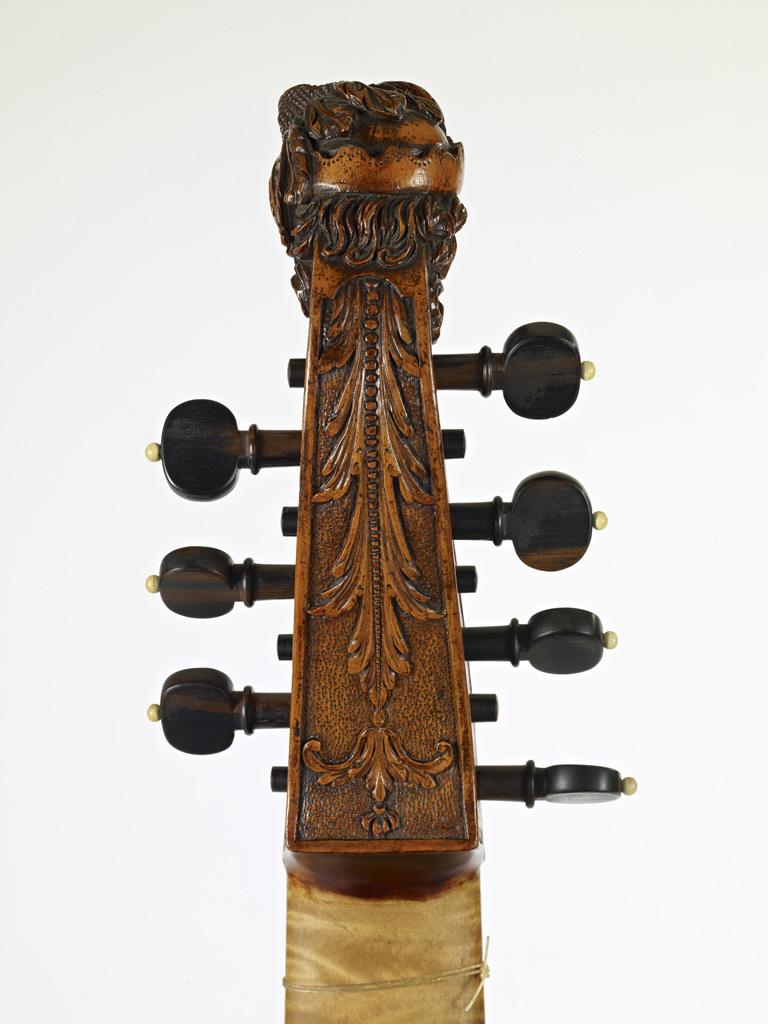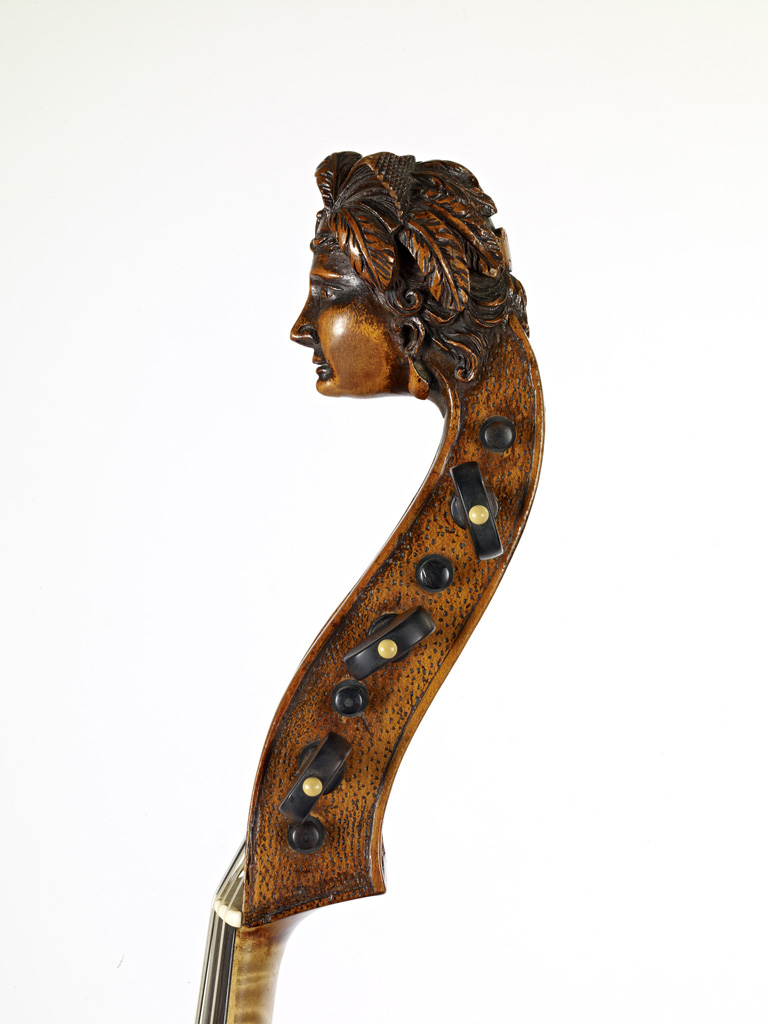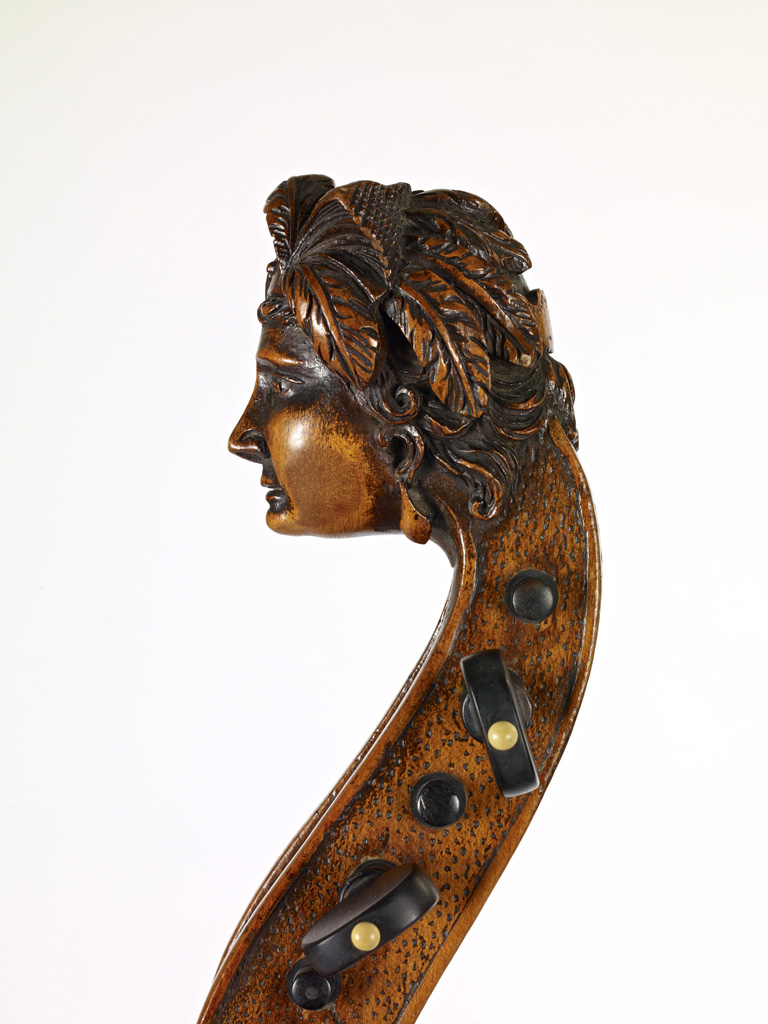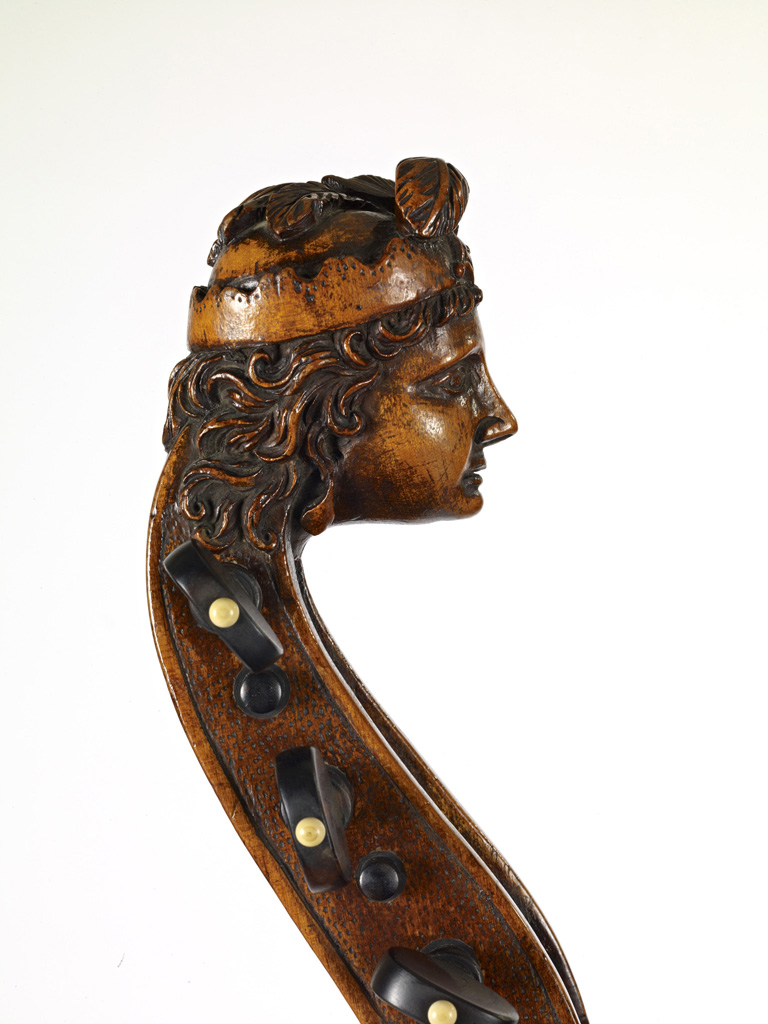The table is of two matched pieces, with 15 growth rings per cm at the center, widening to 4 at the edges. It has been extended several centimeters with new wood at the neck. The soundholes are C shaped. The single purfling is black-white-black.
The replacement back is two pieces of maple with a broad flame angled down from the center joint. The purfling is two lines of ink.
The ribs are six pieces of maple with straight medium flame.
The replacement neck of maple is grafted to an original pegbox of pearwood or very plain maple. The magnificent carved head represents a man in a feathered cap with a turned up, scalloped brim, or perhaps a metal crown, long curly hair, and earrings, perhaps depicting an American Indian. The back of the pegbox is carved with a descending acanthus leaf motif with a beaded central spine. The ground of the back and the entire sides of the pegbox are stippled with a sharp point. The replacement pegs are streaked ebony with bone pips.
The fingerboard is maple with ebony veneer, and the tailpiece and hookbar solid ebony.
The varnish is a dark reddish brown.
Body length 72.5
Body width
upper bout 32.8
center bout 21.6
lower bout 38.9
String length 70.6
Rib height
top block 8.1
fold 12.8
upper corners 13.3
lower corners 12.9
bottom block 13.3
The label is illegible.
Bought in October 1970 from Tony Bingham, London



